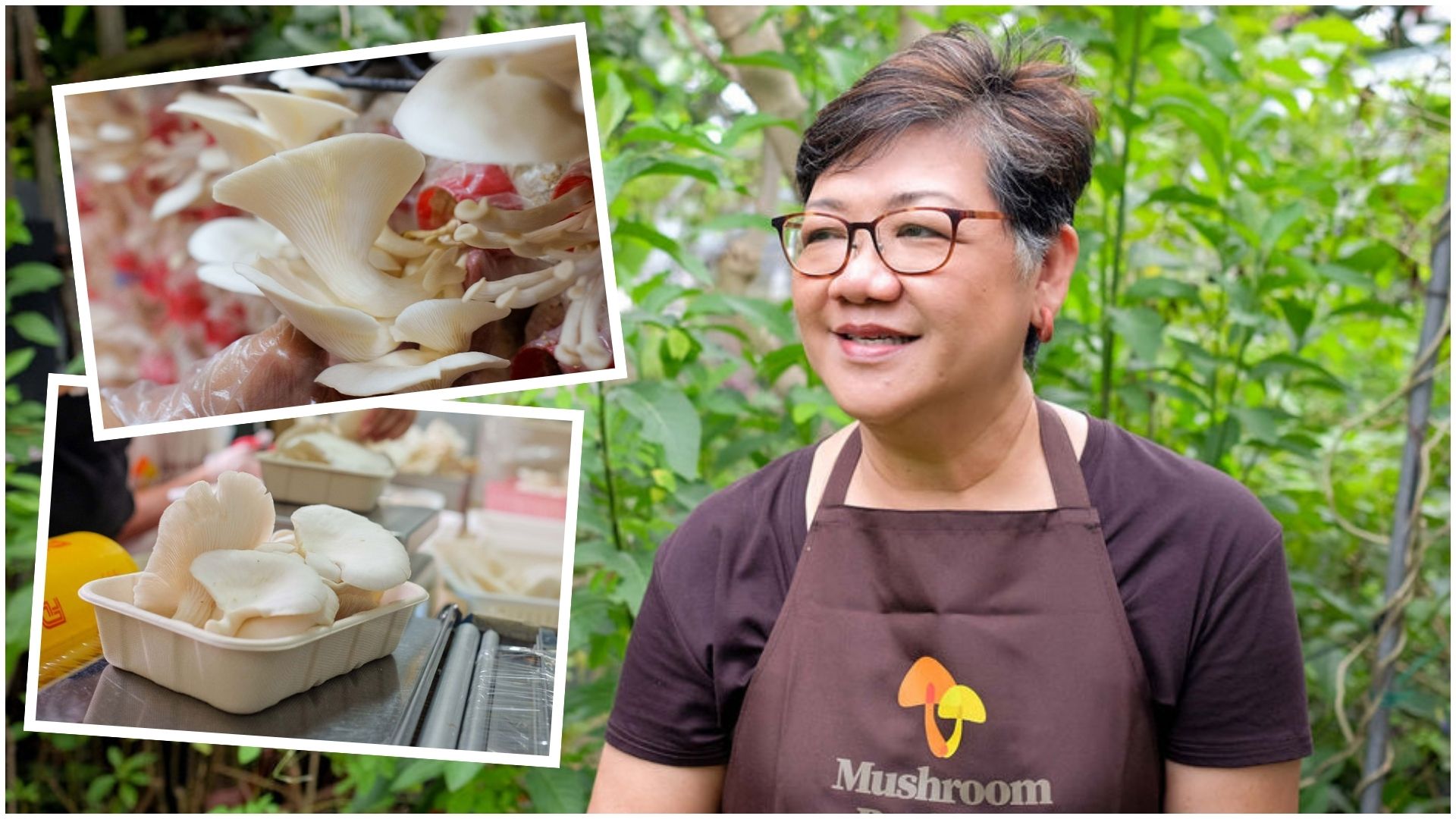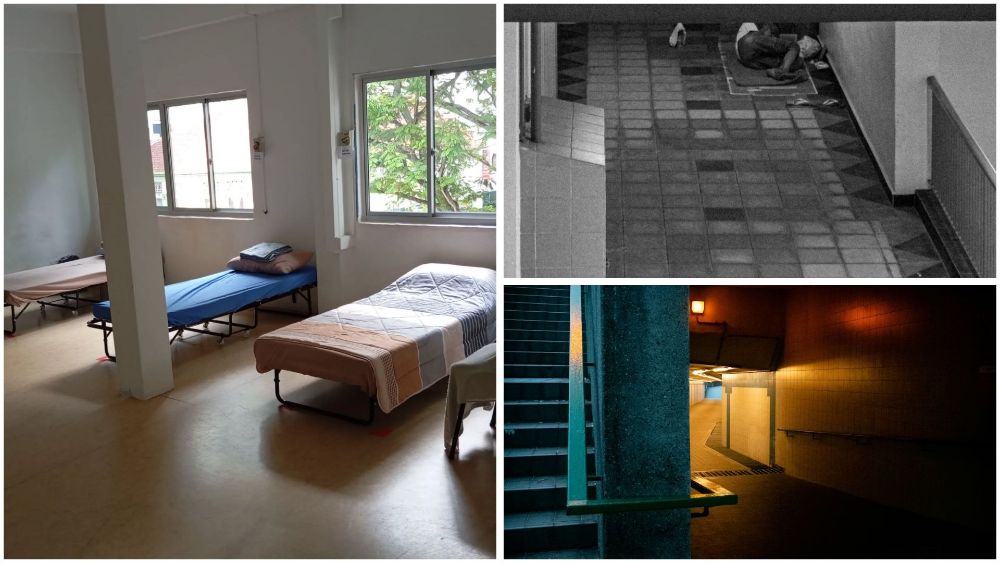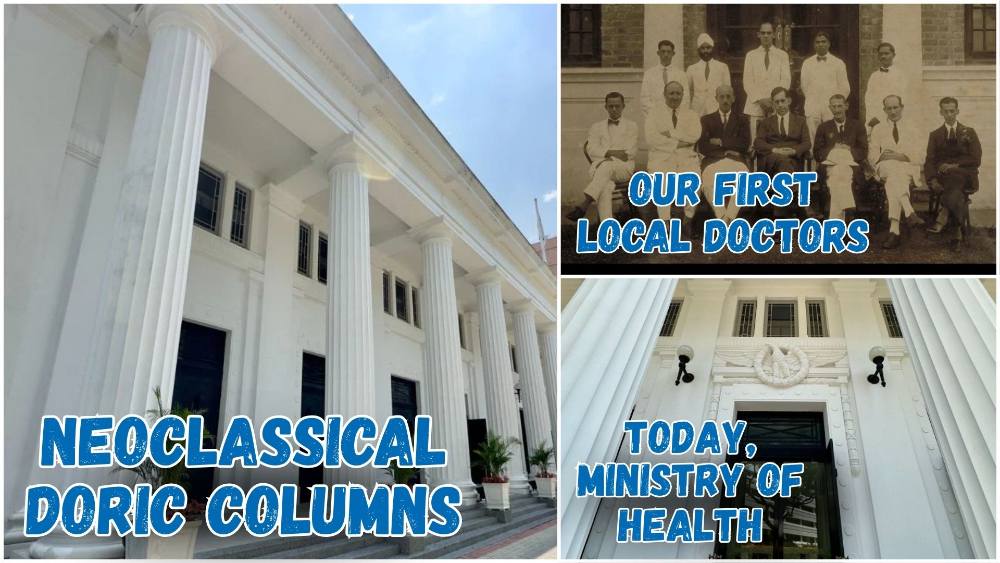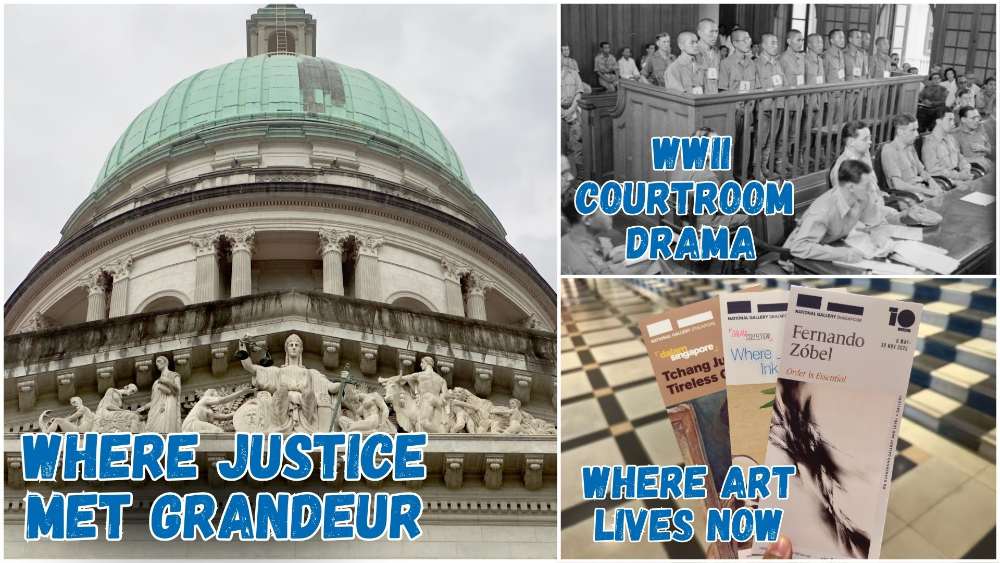National Monuments Of Singapore: Yueh Hai Ching Temple
What is a National Monument? Who gazettes them? How many national monuments are there in Singapore? To date, the Preservation of Sites and Monuments, a division of National Heritage Board, has identified and gazetted 75 buildings, structures and sites of national significance as an integral part of Singapore’s built heritage.
And we're here to tell you all about them - one National Monument at a time!
You've probably passed by or stepped into more than a few of them without realising they were National Monuments: Al-Abrar Mosque, Asian Civilisations Museum, the Civilian War Memorial, Saint Andrew's Cathedral, the Esplanade Park Memorials, Fort Siloso on Sentosa - no need to plan an itinerary for friends visiting from overseas; just show them this article ✌️
In this edition, we focus our attention on one of Singapore's oldest Chinese temples, Yueh Hai Ching Temple.
📍 Location
Yueh Hai Ching Temple was the 34th building to be gazetted as a National Monument, and is located near other National Monuments such as Ying Fo Fui Kun, the Former Nagore Dargah, and Thian Hock Keng. The MRT stations nearest to Yueh Hai Ching temple are Raffles Place or Telok Ayer.
📅 Significant dates
Dates built:
- 1819 or 1820: Simple wood-and-attap shrine
- 1826: Proper temple built
- 1852-1855: Present-day temple
Milestones:
- 1859-1896: Several rounds of renovation
- 1 Nov 1994-9 Apr 1997: First restoration
- 9 Feb 2012-31 Mar 2014: Second restoration
Date gazetted: 28 Jun 1996
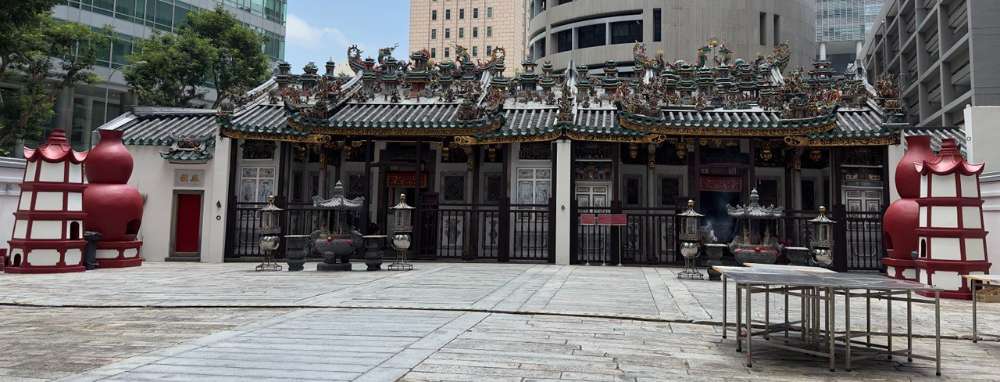 IMAGE: NG KAI
IMAGE: NG KAI
📜 History
Nobody can say for sure the exact date the temple was first built.
Teochew immigrants originated from the Chaoshan region in South China, situated at the eastern tip of Guangdong Province and sharing a border with Fujian Province. Upon arriving in Singapore in 1819 or 1820, they erected a modest shrine made of wood and attap on what is now Philip Street, where they offered prayers of thanks to Mazu (妈祖), the Goddess of the Seas, for her protection during their perilous sea journeys from China.
This gesture gave rise to the temple’s name, which translates into English as the "Temple of the Calm Sea of the Guangdong (Yue) People", and the Teochew name is "Wak Hai Cheng Bio". It is believed that in 1826, a man named Lin Pan (林泮) constructed a proper temple on the site of the original shrine. Like many other religious sites in Singapore, the temple also served as a social hub for newly arrived immigrants.
Ngee Ann Kongsi (义安公司), founded in 1845 to oversee the religious and welfare needs of Singapore’s Teochew community, assumed management of the temple that same year. In its early years, the Kongsi was headed by Seah Eu Chin (佘有进), a prosperous Teochew merchant involved in the pepper and gambier trade. With financial support from the expanding Teochew population in Singapore, Yueh Hai Ching Temple was rebuilt between 1852 and 1855.
After the temple's last restoration in 2014, it was conferred the “2014 Unesco Asia Pacific Awards for Cultural Heritage Conservation – Award of Merit” on 3 Sep 2014. The awards programme recognises the effort of private individuals and organisations that have successfully restored and conserved structures and buildings of heritage value in the region.
 Yueh Hai Ching Temple also received the Urban Redevelopment Authority Architectural Heritage Award (Category A – Full Restoration) that recognises owners and professionals in the restoration of monuments to their former glory. | IMAGE: NG KAI
Yueh Hai Ching Temple also received the Urban Redevelopment Authority Architectural Heritage Award (Category A – Full Restoration) that recognises owners and professionals in the restoration of monuments to their former glory. | IMAGE: NG KAI
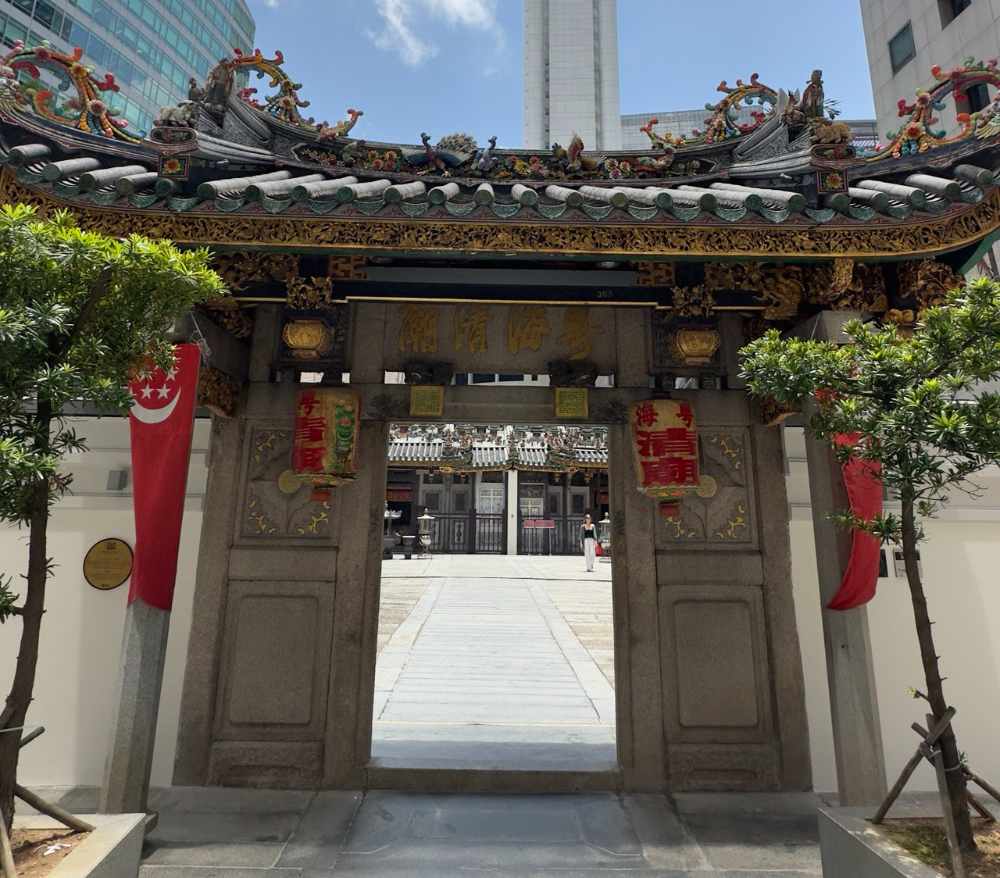 IMAGE: NG KAI
IMAGE: NG KAI
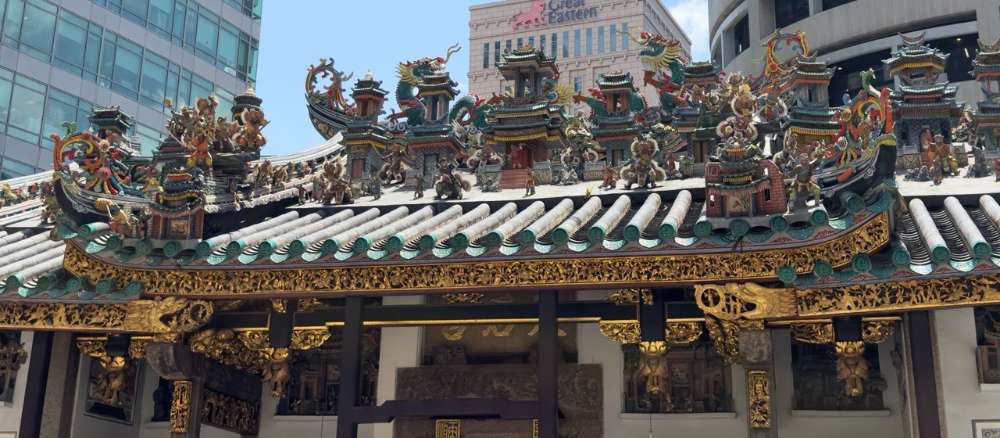 IMAGE: NG KAI
IMAGE: NG KAI
📐 Design and architecture
Yueh Hai Ching Temple was constructed following the typical three-hall layout of traditional Chinese temples, complete with covered courtyards linking the entrance and main halls. Its roof, characteristic of Teochew architecture, features a relatively straight ridge. One of its most striking elements is the collection of intricate three-dimensional sculptures adorning the roof, which illustrate scenes of Chinese towns alongside mythical plants and animals symbolising longevity, prosperity, and strength.
The temple’s stunning roof decorations, including detailed depictions of dragons, were created using a traditional technique from Guangdong known as qian ci (嵌瓷), more commonly referred to as jian nian (剪粘), which translates to "cut and paste". This method involves carefully cutting colourful ceramic pieces into smaller shapes and arranging them into intricate mosaic designs.
Similar decorative work can also be seen on the roofs of other National Monuments in Singapore, such as the Former House of Tan Yeok Nee, Thian Hock Keng, Former Keng Teck Whay Building, Hong San See, and Lian Shan Shuang Lin Monastery.
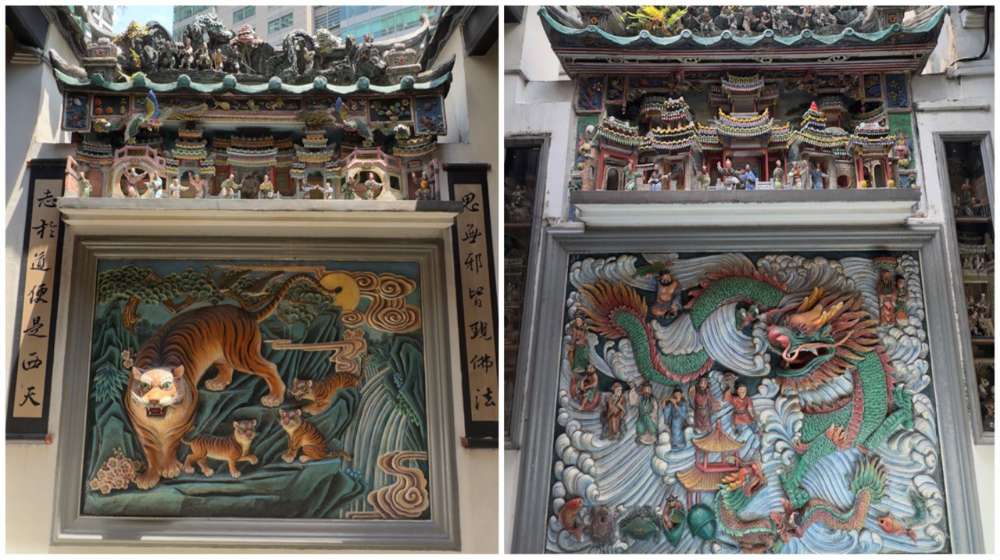 IMAGES: NG KAI
IMAGES: NG KAI
Inside the temple, the interior is adorned with elaborate carvings that portray scenes from well-known Chinese legends and folklore, including "Eight Immortals Crossing the Seas" (八仙过海), "Ruse of the Empty City" (空城计), and "Madam White Snake Steals Lingzhi Grass to Save Xu Xian" (白素贞偷灵芝草救许仙).
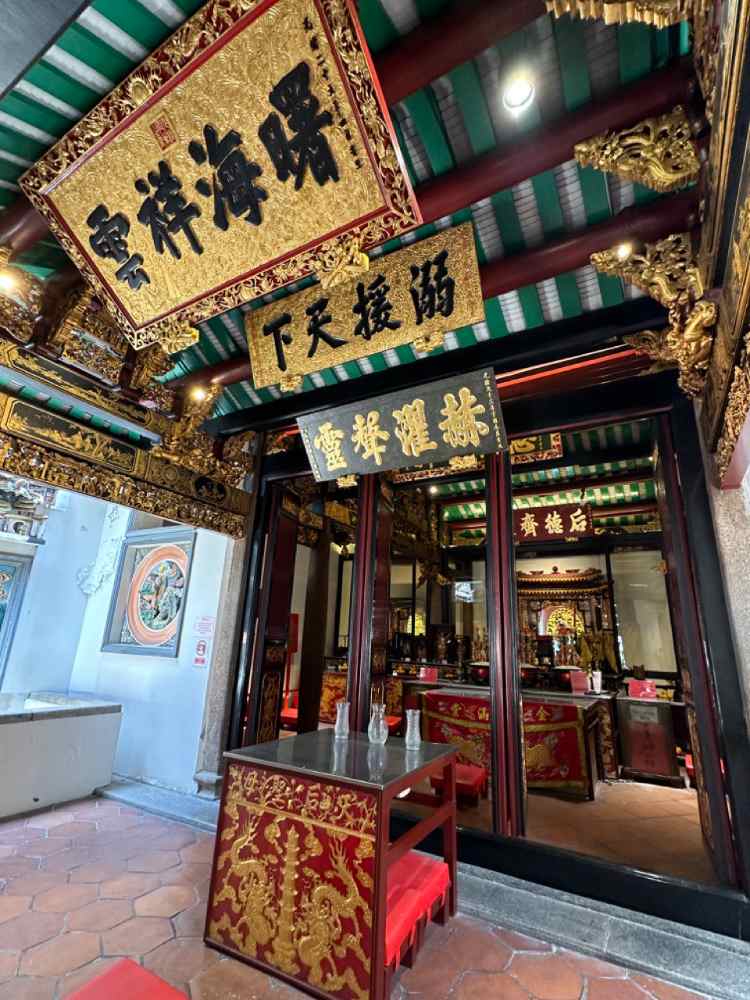
The words on the topmost plaque were blessings from an emperor of China! | IMAGE: NG KAI
In 1899, Emperor Guangxu of the Qing Dynasty presented Yueh Hai Ching Temple with a scroll bearing four calligraphic characters – shu hai xiang yun (曙海祥云) – personally inscribed by him. Translated as “moving seas with peaceful clouds above”, the phrase symbolised the Emperor's blessings to the Chinese community in Singapore. This honour was granted in appreciation of the temple’s donation towards flood relief efforts in Shandong, China.
The characters were later carved onto a large wooden plaque, which still hangs prominently in the temple today. Apart from Yueh Hai Ching Temple, Thian Hock Keng is the only other temple in Singapore known to have received a similar imperial honour.
💌 Finding love
In addition to paying homage to the primary deities, the sea goddess Mazu, and Xuan Tian Shang Di (the Mysterious Supreme Emperor of Heaven), worshippers also gather at the temple to show reverence to Yue Lao, the Chinese deity of love and marriage. Devotees who manage to find love in their place of worship? Now, that's a match made in heaven!
🕖 Opening hours
Open daily from 8am to 5pm, including public holidays.
🎟️ Admission
Entry is free, but do respect the rules (such as no photography within certain areas) written on notices around the temple.
For the latest updates on Wonderwall.sg, be sure to follow us on TikTok, Telegram, Instagram, and Facebook. If you have a story idea for us, email us at [email protected].
